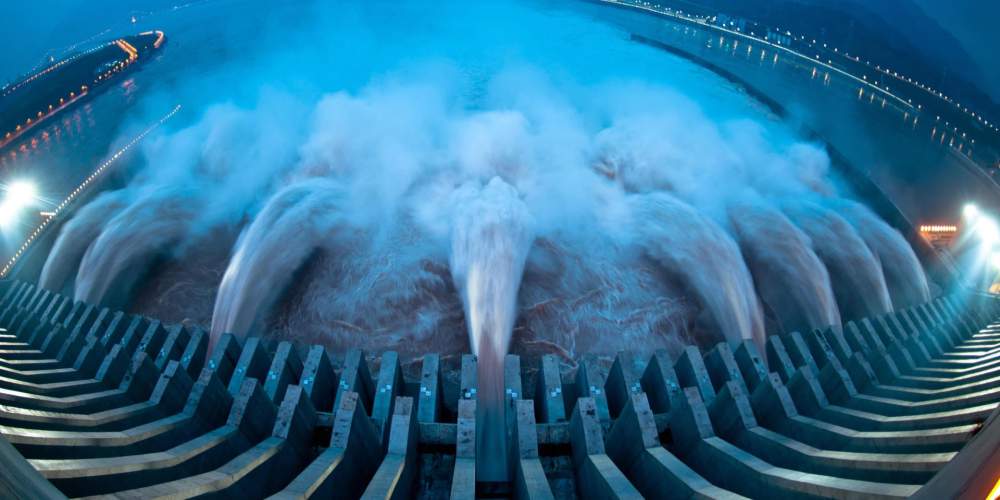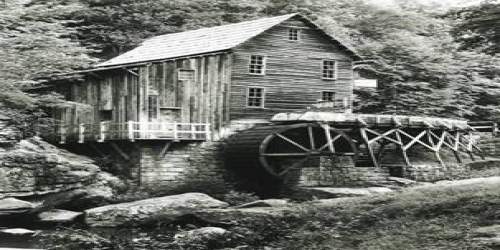Read Time : 4 Minutes
Site Suitablilty for Hydroelectricity Generation
Is my Site Suitable for Hydroelectricity Generation?
Unlike other means of renewable energy generation, such as solar PV and wind that can be installed in most areas, hydro systems are only suited to a specific sites with the right conditions. The generation of hydroelectricity primarily requires a watercourse which meets certain criteria. This rules out the vast majority of home owners who will not have a readily available free flowing river to hand. Even those sites with access to a watercourse may not be suitable, so it is necessary to determine the proposed site’s viability before taking any project beyond the planning stages.
The principal factors that must be taken into account when calculating the suitability of a riverside site for hydroelectricity generation are head and flow. The amount of potential energy available at a site can be determined by multiplying the head (in meters) by the flow rate (in liters per second) by 9.81m² (gravity). There is relatively little that can be done to improve these measurements, which means that they are an extremely important consideration when looking into hydroelectricity generation.
Using the Hydroelectricity for your Home or Business
It is possible to use the energy produced by the hydroelectricity system in your home or business and to sell it to your energy provider through the Smart Export Guarantee (SEG), although energy you produce and use yourself will be significantly cheaper than that bought from energy companies.
COMPARE PRICES FROM LOCAL INSTALLERS
Compare prices from local companies fast & free
Enter your postcode to compare quotes from leading professionals. We promise to keep your information Safe & Secure. Privacy Policy
Head and Hydroelectric Production
Put simply, head is the vertical difference in water level between the points at which the system takes in and discharges water. Head is usually measured in meters. The greater the head is, the greater the water pressure and total power output will be. Run-of-the-river hydro sites located on steep hills are therefore ideal. In other words, the sharper the angle the more viable the hydroelectric production.
At some sites, there may be some measures that can be taken to slightly increase the head measurement (and in turn the system output), such as clearing silt from the riverbed or raising sluices in order to increase the water level. Caution should be taken here, however, as this can cause unwanted effects such as flooding. Head also has an impact on the type of system that will need to be used – which, in turn, affects the overall costs.
Turbines at sites with a higher head measurement usually, though not always, cost less than those at a sites with a lower one. A head measurement of 10 meters or less is usually considered ‘low head’, 10-50 meters ‘medium head’, and 50 meters plus is usually called ‘high head’.
Flow Rate and Hydroelectricity Production
This refers to the flow rate of water (the volume of flowing water) in a given watercourse. It is important to note that the flow rate at a site will vary throughout the different periods of the year. For example, the watercourse’s flow rate will increase dramatically during periods of heavy rainfall. It is therefore necessary to measure flow rates over the course of a year to get an accurate picture of the total amount of energy that will be available for the generation of electricity.
Measuring the flow of a watercourse is a long and complicated process, so if you are planning on installing a hydro system, it is a good idea to hire a hydrologist who can carry out these calculations for you. The hydrologist will produce a flow duration curve for the watercourse, which shows how the flow is distributed over a given period of time. This is necessary to determine the appropriate size of turbine for the site and will give you an idea of how much electricity is likely to be generated by a hydro installation.
A useful preliminary resource that can be consulted is the government-funded Centre for Ecology & Hydrology (CEH), whose website has an archive which contains flow data (annual hydrographs and flow duration curves) for rivers in the United Kingdom.
What head and flow measurements are required for my site to be suitable?
All watercourses have the potential to produce energy, though in order for a hydro system to be viable there are limits. The precise head and flow measurements needed to make a hydroelectricity generation viable depend on the intended purpose of the installation. A very general rule of thumb is that the minimum head measurement needs to be 2 meters at the very least and the flow above 2 litres per second.
You should always speak to prospective installation companies about this before making any final decisions, however, as these measurements are of utmost importance to the viability of any prospective hydroelectric system.
Other Site Factors for Hydroelectricity
Given that significant engineering may need to be done, there must be suitable access for construction if the proposed site is to be suitable for a hydro system. There will also be important environmental and planning permission implications for every hydro installation. And finally, there are the financial implications.
Whilst hydroelectric systems can produce a decent return on investment with the Feed in Tariff they are not a cheap option and you need to consider carefully all the pros and cons.
Head
Put simply, head is the vertical difference in water level between the points at which the system takes in and discharges water. Head is usually measured in meters. The greater the head is, the greater the water pressure and total system output will be. Run-of-river hydro sites located on steep hills are therefore ideal.
At some sites, there may be some measures that can be taken to slightly increase the head measurement (and in turn the system output), such as clearing silt from the riverbed or raising sluices in order to increase the water level. Caution should be taken here, however, as this can cause unwanted effects such as flooding. Head has an impact on the type of system that will need to be used - which also affects costs.
Turbines at sites with a higher head measurement usually, though not always, cost less than those at sites with lower ones. A head measurement of 10 meters or less is usually considered ‘low head’, 10-50 meters ‘medium head’, and 50 meters plus is usually called ‘high head’.
Flow
This refers to the flow rate of water (the volume of flowing water) in a given watercourse. It is important to note that the flow rate at a site will vary throughout the different periods of the year. For example, the watercourse’s flow rate will increase dramatically during periods of heavy rainfall. It is therefore necessary to measure flow rates over the course of a year to get an accurate picture of the total amount of energy that will be available for the generation of electricity.
Measuring the flow of a watercourse is a long and complicated process, so if you are planning on installing a hydro system, it is a good idea to hire a hydrologist who can carry out these calculations for you. The hydrologist will produce a flow duration curve for the watercourse, which shows how the flow is distributed over a given period of time and which is necessary to determine the appropriate size of turbine for the site.
This will also give you an idea of how much electricity is likely to be generated by a hydro installation. A useful preliminary resource that can be consulted is the government-funded Centre for Ecology & Hydrology (CEH), whose website has an archive which contains flow data (annual hydrographs and flow duration curves) for rivers in the United Kingdom: http://www.ceh.ac.uk/data/nrfa/data/search.html
What head and flow measurements are required for my site to be suitable?
All watercourses have the potential to produce energy, though in order for a hydro system to be viable there are limits. The precise head and flow measurements needed to make a hydroelectricity generation viable depend on the intended purpose of the installation.
A very general rule of thumb is that the minimum head measurement be 2 meters at the very least and the flow at least 2 liters per second. One should always speak to prospective installation companies about this before making any final decisions, however, as these measurements are of utmost importance to the viability of hydro systems.
Other site factors
Given that significant engineering may need to be done, there must be suitable access for construction if the proposed site is to be suitable for a hydro system. There will also be significant environmental and planning permission implications for every hydro installation.
Find a local installer
Welcome to the biggest directory of UK renewable energy companies





 Is Hydroelectricity Generation Worth it
Is Hydroelectricity Generation Worth it


